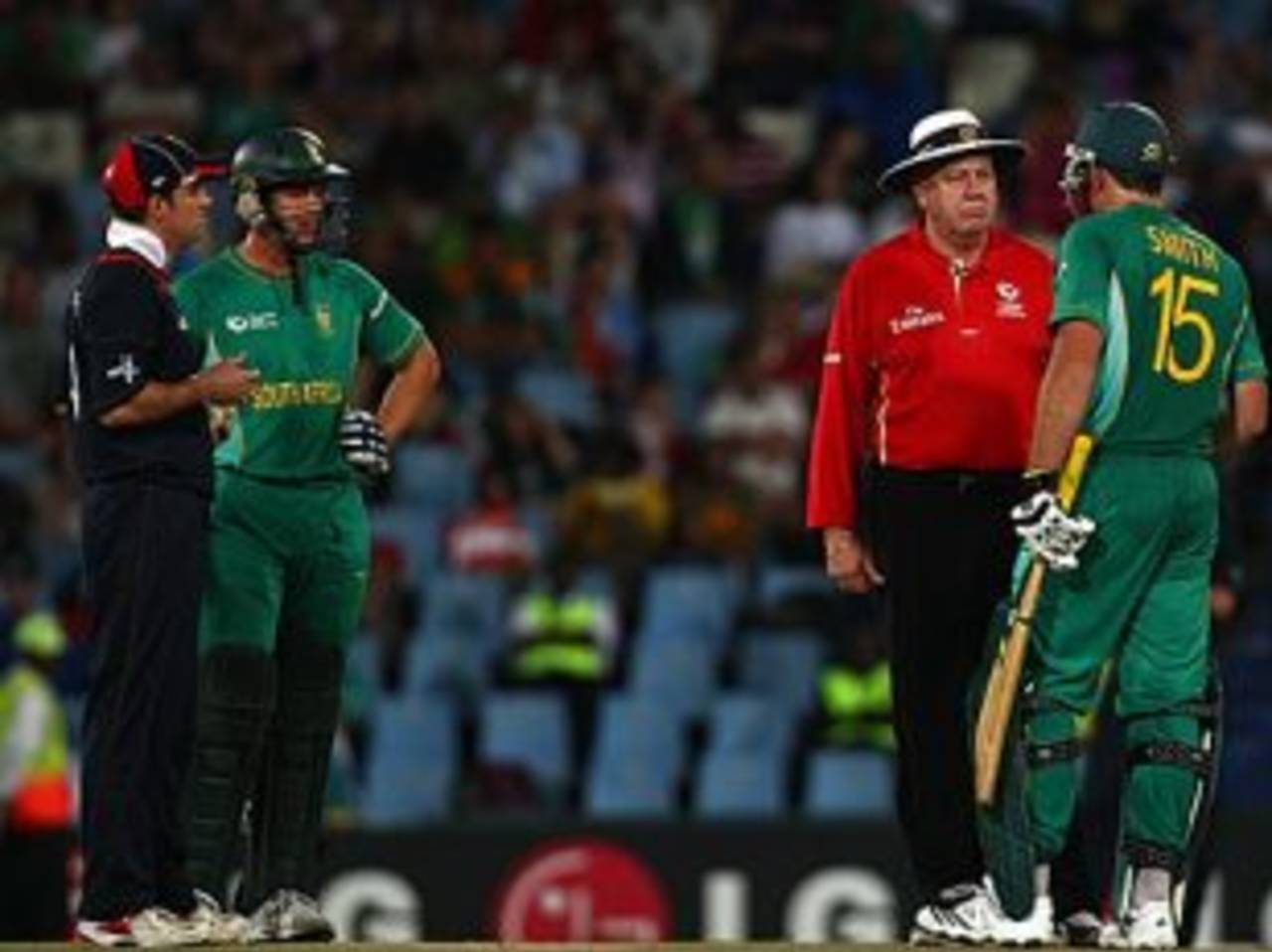Runners abolished, ODI and run-out laws tweaked
The abolition of runners, using a new ball from each end in one-dayers, and restricting when the batting and bowling Powerplays can be taken were among the recommendations of the ICC Chief Executives' Committee

The Andrew Strauss - Graeme Smith confrontation in the 2009 Champions League is one of the many recent controversies over the usage of runners • Getty Images
The changes at a glance
No runners in international cricket
New balls from both ends in ODIs
Batting and bowling Powerplays to be taken between overs 16 and 40
Captains to be suspended after only two over-rate breaches in a year, as opposed to the existing three
Batsmen can be dismissed obstructing the field if they change their course while running to prevent a run-out chance
Bowlers will be allowed to run out a non-striker backing up unfairly